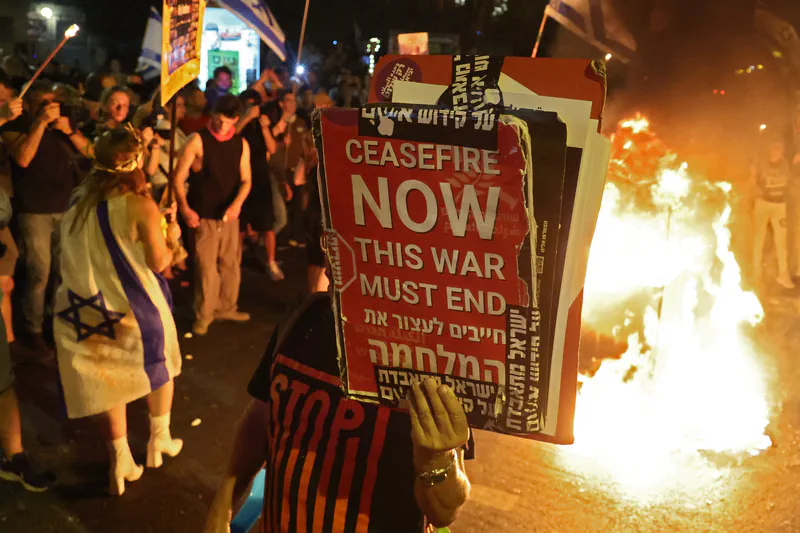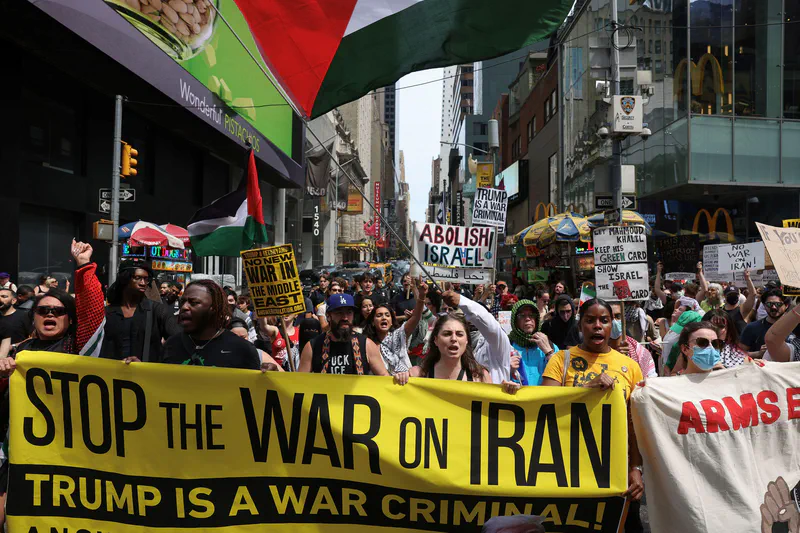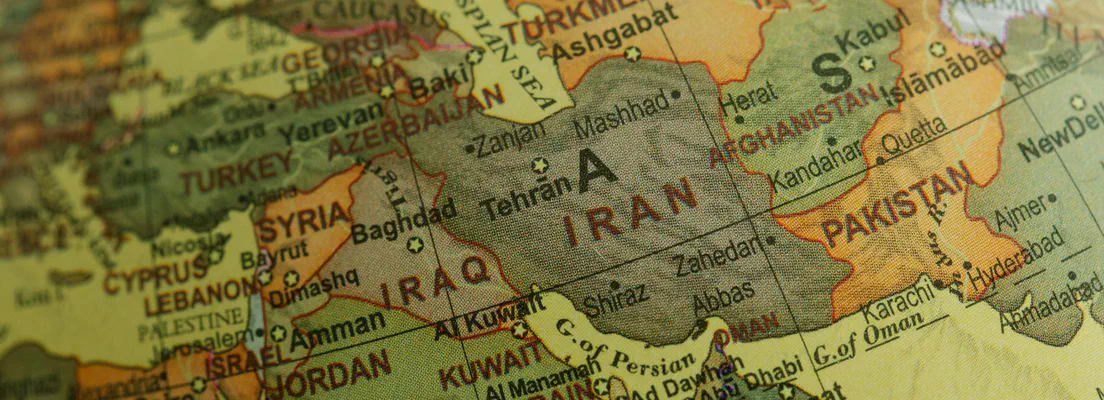The Israel-Iran conflict, often referred to as a “shadow war” due to its covert and indirect nature, has been ongoing for decades, characterized by proxy battles, cyberattacks, assassinations, and military strikes. While major events like missile strikes, nuclear program developments, or proxy conflicts in Syria and Lebanon often dominate media coverage, several critical aspects tend to receive less attention. Here are some underreported or missed elements in the context of the Israel-Iran war from a media perspective:
No. 1. Humanitarian Impact on Civilians in Proxy Conflict Zones
- Media often focuses on high-profile military actions or political rhetoric, but the toll on civilians in areas where Iran and Israel engage through proxies (e.g., Syria, Lebanon, Yemen, and Iraq) is frequently underreported. For example:
- In Syria, Iranian-backed militias and Israeli airstrikes have displaced countless civilians and destroyed infrastructure, but the human stories and long-term consequences are rarely highlighted.
- In Lebanon, Hezbollah (Iran’s primary proxy) and Israeli military operations have caused civilian casualties and economic hardship, yet these impacts are often overshadowed by geopolitical analysis.
No. 2. Cyber Warfare and Its Broader Implications
- Both Israel and Iran have engaged in sophisticated cyberattacks, such as the Stuxnet virus (widely attributed to Israel and the U.S.) that targeted Iran’s nuclear facilities, and Iranian cyberattacks on Israeli infrastructure. While major incidents occasionally make headlines, the ongoing, less visible cyber skirmishes and their potential to escalate into broader conflict are often ignored.
- The media misses the broader societal and economic damage caused by these attacks, such as disruptions to critical infrastructure (e.g., water systems, power grids) and the potential for civilian harm.
No. 3. Domestic Political Dynamics in Iran and Israel
- In Iran, internal dissent and economic struggles due to sanctions (partly driven by tensions with Israel) are rarely tied to the conflict in mainstream coverage. The Iranian regime often uses the external threat of Israel to justify domestic repression and rally public support, a narrative that is underexplored.
- In Israel, the political cost of sustained military readiness and operations against Iran or its proxies (e.g., budget allocations, societal stress from constant alerts) is often downplayed in favor of focusing on security achievements or specific strikes.
No. 4. Regional Alliances and Their Complexities
- The media often oversimplifies the conflict as a direct Israel-Iran rivalry, missing the intricate web of regional alliances. For instance:
- Iran’s influence in Iraq through Shia militias and its impact on Iraqi stability is rarely framed as part of the broader Israel-Iran conflict.
- The role of Gulf states like Saudi Arabia and the UAE, which quietly align with Israel against Iran, is often mentioned but not deeply analyzed in terms of how these relationships shape the conflict’s trajectory.
- Turkey’s balancing act between Iran and Israel, and its own regional ambitions, is another underreported dynamic.
No. 5. Nuclear Program’s Environmental and Safety Risks
- While Iran’s nuclear ambitions are a frequent topic, the potential environmental and safety risks of attacks on nuclear facilities (e.g., Israeli strikes on sites like Natanz) are rarely discussed. A strike could lead to radioactive leaks or other disasters with regional consequences, but this angle is often sidelined in favor of political or military analysis.
No. 6. Psychological Warfare and Propaganda Efforts
- Both sides engage in extensive psychological warfare, including disinformation campaigns and media manipulation to shape public opinion domestically and internationally. For example:
- Iran’s state media often exaggerates Israeli threats to bolster domestic unity.
- Israel’s public messaging sometimes amplifies Iranian threats to justify preemptive actions.
- These efforts, and their impact on public perception and policy, are rarely dissected in depth by mainstream outlets.
No. 7. Economic Warfare and Sanctions’ Broader Effects
- The economic dimension of the conflict, particularly U.S. and Israeli efforts to cripple Iran through sanctions, gets some coverage, but the ripple effects on global markets, energy prices, and third-party countries are often overlooked.
- For instance, sanctions on Iran affect oil exports, which in turn impact global energy security, but this is rarely framed as a direct consequence of the Israel-Iran rivalry.
No. 8. Potential for Escalation and Miscalculation
- While specific incidents (e.g., the killing of Qasem Soleimani in 2020 or Israeli strikes on Iranian targets) get attention, the broader risk of miscalculation leading to a full-scale war is often downplayed. Both sides operate with a high degree of brinkmanship, and a small misstep could spiral into a larger conflict, yet this precarious balance is not a consistent focus in media narratives.
No. 9. Impact on Global Diplomacy
- The Israel-Iran conflict affects broader international relations, such as the U.S.’s role in the Middle East, the Iran nuclear deal (JCPOA) negotiations, and relations with powers like Russia and China. However, media often treats these as separate issues rather than interconnected pieces of the same puzzle. For example, Russia’s growing partnership with Iran as a counterweight to Western influence tied to the conflict with Israel is underexplored.
How about underreported aspects of the Israel-Iran conflict related to internal dynamics within Israel and the United States, particularly how government actions affect citizens and how public sentiment or protests against further military involvement are overlooked in media coverage. Let’s dive into these two specific areas that often miss the spotlight in mainstream reporting on the Israel-Iran war (or broader tensions).
No. 10. Internal Israeli Dynamics: Citizens’ Perspectives and Government Policies

— ALJAZEERA
- What’s Missed: The media often focuses on Israel’s military actions, political leadership statements, or security policies when covering tensions with Iran. However, the impact of these policies on ordinary Israeli citizens—and their growing discontent or concerns—is frequently underreported. There’s a lack of coverage on how constant military readiness, mandatory conscription, and the psychological toll of living under the threat of conflict (e.g., rocket alerts, fear of escalation with Iran or its proxies like Hezbollah) affect daily life.
- Specific Issues:
- Economic and Social Strain: The Israeli government allocates significant portions of its budget to defense (around 5-6% of GDP annually, one of the highest rates globally), partly due to threats from Iran and its allies. This diverts funds from social services, education, and healthcare, leading to domestic frustration. Protests or public debates over these priorities often go unreported internationally.
- Dissent Within Israel: Not all Israelis support aggressive policies toward Iran. Some citizens and groups advocate for diplomacy over military action, and others question the government’s focus on external threats while domestic issues like inequality or political corruption persist. For example, during periods of heightened tension with Iran, there have been smaller protests or movements within Israel calling for de-escalation, but these rarely make international headlines compared to military strikes.
- Psychological Impact: Living in a state of near-constant alert (e.g., due to potential Iranian retaliation or proxy attacks) creates stress, anxiety, and trauma among Israelis, especially in border areas. Stories of how families cope, or how children are affected, are rarely highlighted in favor of strategic or political analysis.
- Why It’s Missed: International media often frames Israel as a monolithic entity focused on security, ignoring internal divisions or civilian perspectives. Additionally, access to grassroots voices can be limited, and the narrative of “Israel vs. Iran” overshadows domestic nuance.
No. 11. U.S. Public Sentiment and Protests Against Involvement in War

— REUTERS
- What’s Missed: In the United States, there is significant public fatigue and opposition to further military involvement in the Middle East, including in the context of the Israel-Iran conflict. While U.S. government support for Israel (through military aid, intelligence sharing, and diplomatic backing) often dominates coverage, the voices of Americans who protest against this involvement or question the risk of being drawn into another war are frequently sidelined.
- Specific Issues:
- Anti-War Protests: Groups across the U.S., including progressive organizations, student movements, and peace activists, have held demonstrations opposing U.S. military aid to Israel or potential escalation with Iran (especially after events like the 2020 killing of Qasem Soleimani, which raised fears of a broader war). These protests often receive minimal national coverage compared to official U.S. policy statements or military developments.
- Public Opinion: Polls have shown growing American skepticism about endless military engagements in the Middle East. For instance, a 2021 Gallup poll indicated that a majority of Americans favor a less interventionist foreign policy, and many question the $3.8 billion in annual military aid to Israel, especially when domestic issues like healthcare and infrastructure need funding. Yet, this sentiment is rarely framed as directly tied to the Israel-Iran conflict in media narratives.
- Political Divide: There’s a generational and partisan split in the U.S. on Israel policy, with younger Americans and some Democrats increasingly critical of unconditional support for Israel’s actions against Iran or its proxies. This shift in public opinion gets less attention than the bipartisan congressional support for Israel often highlighted in the news.
- Why It’s Missed: Media outlets often prioritize elite perspectives (e.g., statements from the White House, Pentagon, or Congress) over grassroots movements. Protests, unless they are massive or result in significant disruption, tend to be treated as secondary stories. Additionally, the complex U.S.-Israel relationship is often presented as a strategic necessity, sidelining public dissent as less “newsworthy.” There’s also a risk of editorial bias, where focusing on anti-war sentiment might be seen as politically charged or divisive.
No. 12. Broader Implications of These Oversights:
- Lack of Public Awareness: By not covering internal Israeli discontent or U.S. anti-war sentiment, the media misses an opportunity to show the human and democratic dimensions of the conflict. These perspectives could foster more nuanced discussions about policy options beyond military escalation.
- Policy Influence: Public opinion and protests can pressure governments to rethink strategies, but if these voices aren’t amplified, policymakers in both Israel and the U.S. may face less accountability for decisions that risk further conflict with Iran.
- Missed Opportunities for Dialogue: Highlighting dissent or alternative viewpoints could encourage dialogue about de-escalation or diplomatic solutions, rather than perpetuating a narrative of inevitable confrontation.
No. 13. Why These Issues Struggle for Attention:
- Focus on Immediate Events: Media outlets often prioritize breaking news (e.g., missile strikes, assassinations) over long-term trends or less visible aspects like cyber warfare or civilian impacts.
- Complexity and Resources: Some of these issues require deep expertise and on-the-ground reporting, which can be resource-intensive or risky in conflict zones.
- Audience Bias: Outlets may cater to audience preferences for clear “good vs. evil” narratives, sidelining nuanced or less sensational topics like economic warfare or psychological operations.
- Access Restrictions: Both Israel and Iran tightly control information and access to sensitive areas, making independent reporting on certain topics (e.g., nuclear risks, civilian tolls) challenging.
- Media Priorities: Sensational events like missile strikes, assassinations, or nuclear developments grab more attention than the slower, less visible stories of public sentiment or societal impact.
- Access and Framing: Reporting on internal dissent requires access to local communities and a willingness to challenge dominant narratives, which can be logistically or editorially challenging. In the U.S., anti-war protests are often framed as niche or partisan rather than reflective of broader war fatigue.
- Government Narratives: Both the Israeli and U.S. governments often control the flow of information during conflicts, emphasizing security and unity over internal criticism or opposition, which can influence media focus.
Conclusion
The Israel-Iran conflict is multifaceted, involving military, economic, cyber, and psychological dimensions that extend far beyond the headlines of direct confrontations. Greater media attention to these underreported aspects could provide a more comprehensive understanding of the conflict’s stakes, risks, and human costs, as well as the potential pathways to de-escalation or resolution. Encouraging investigative journalism, amplifying voices from affected civilian populations, and focusing on long-term trends rather than isolated events could help address these gaps.
The Israel-Iran conflict’s coverage often misses the “people’s story”—whether it’s Israelis grappling with the societal costs of their government’s policies or Americans protesting against further entanglement in Middle Eastern wars. These perspectives are critical to understanding the full scope of the conflict and its ripple effects. Media could bridge this gap by prioritizing on-the-ground reporting, amplifying diverse voices (e.g., activists, affected families), and connecting domestic sentiment to international policy. This would provide a more holistic view, showing that the conflict isn’t just about state actors but also about the citizens who bear its consequences and seek change.



